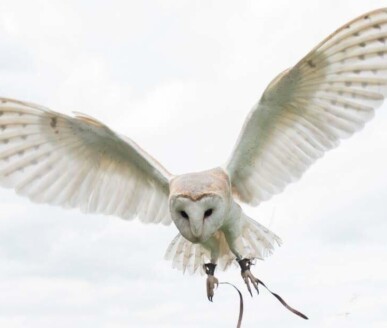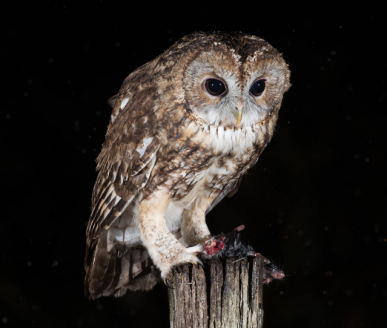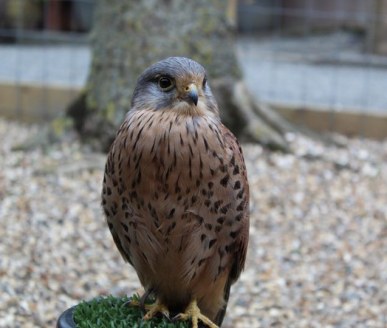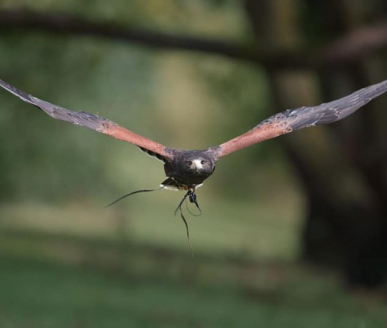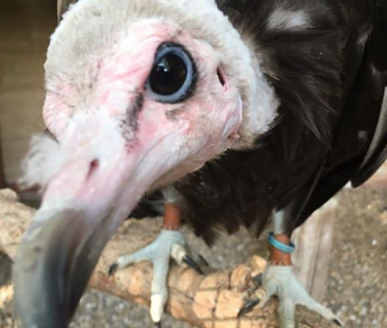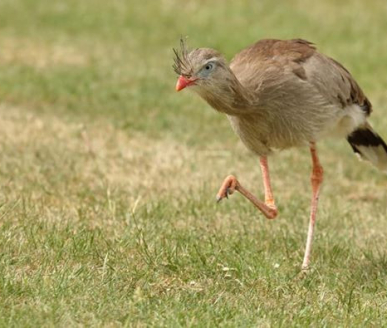Formally The Imperial Bird of Prey Academy, Barleylands is now home to many a bird. From owls to kestrels, falcons to hawks, as well as some more unusual birds such as our Red Legged Seriema, Dandy, and Laughing Kookaburra, Petrie.
As well as meeting all the different birds of prey, we have regular flying and feeding demonstrations with the team. Led by Faith and her team who have had many years of experience, these demonstrations are educational, amusing and unpredictable. The displays are on regularly, for timings check out the daily timetable.
Owls:
Here at Barleylands we have a wide variety of Owls on display including Barn owls, Tawny owls, Eagle owls and Great Grey owls.
Barn Owls (Tyto alba)
Least Concern – IUCN Red List
Come and see our beautiful Barn Owls. With some species of bird it is easier to tell the difference between males and females than with others. One example is the barn owl, with females typically having black speckles on their chest compared to the pure white males. It is thought that bigger speckles are preferred by males, due to potentially advertising the genetic fitness of the female.
Click HERE to book a one to one experience with our barn owl!
Tawny Owl (Strix aluco)
Least Concern – IUCN Red List
The tawny owl is roughly the size of a woodpigeon, with a rounded head and a ring of dark feathers around its face surrounding their dark eyes. With the Tawny Owl being our most common UK owl species, it’s ironic they are more likely to be heard rather than seen due to their nocturnal habits.
Do you want to meet these owls in our owl experiences? Or why not see the owls fly in our daily bird of prey demonstrations.
Hawks & Falcons:
Hawks and falcons have been used for the countryside for thousands of years! Here at Barleylands we have both native and non-native species of falcons and hawks. From Peregrine falcons to Harris hawks, your sure to see some interesting characters!
Common Kestrels (Falco tinnunculus)
Endangered – IUCN Red List
Those of you familiar with native birds of prey will probably recognise our Common Kestrels. These birds you will see hovering by the side of the road!
Harris Hawks (Parabuteo unicinctus)
Least Concern – IUCN Red List
Did you know Harris Hawks will actively pursue prey on the ground as well as from above? Working in groups, several of the birds will run into thick cacti in order to flush out prey such as ground squirrels, with the rest of the birds waiting in the wing.
Click HERE to book a meet & greet with our Hawk!
Vulture & Seriema:
Here at Barleylands we have 2 very special birds of prey. 1 African Hooded Vulture, called ‘Gonzo’ who has been here since 2012! And 1 Red Legged Serima ‘Dandy’, who you might have heard around the farm!
Hooded Vultures (Necrosyrtes monachus)
Critically Endangered – IUCN Red List
A vulture typically has a bald face in order to keep itself clean when sticking its head into a carcass. They will then sit in the sun to allow any ‘post dining mess’ to dry up, and will clean themselves accordingly. Isn’t our Hooded Vulture, Gonzo, a handsome looking bird?!
Red-Legged Seriema (Cariama cristata)
Least Concern – IUCN Red List
A shot of Dandy during our afternoon display on the Farm Park. Our displays give Dandy the perfect opportunity to show off his long legs. He is pretty fast too, the Red-Legged Seriema is able to reach speeds of 15-20mph!

